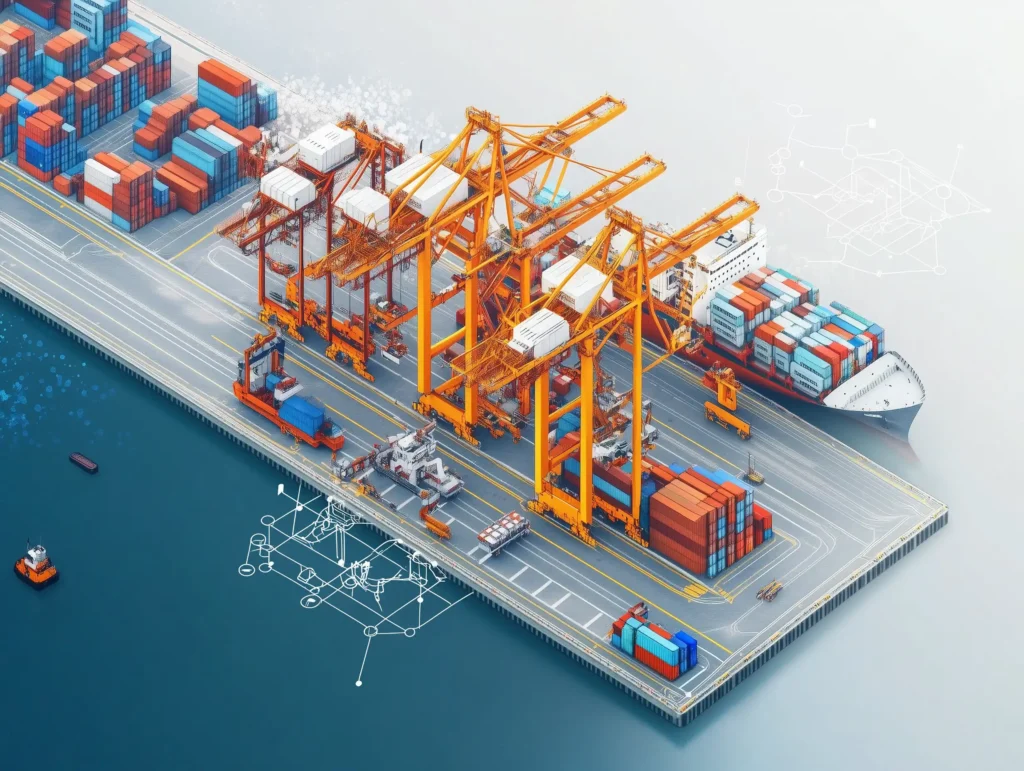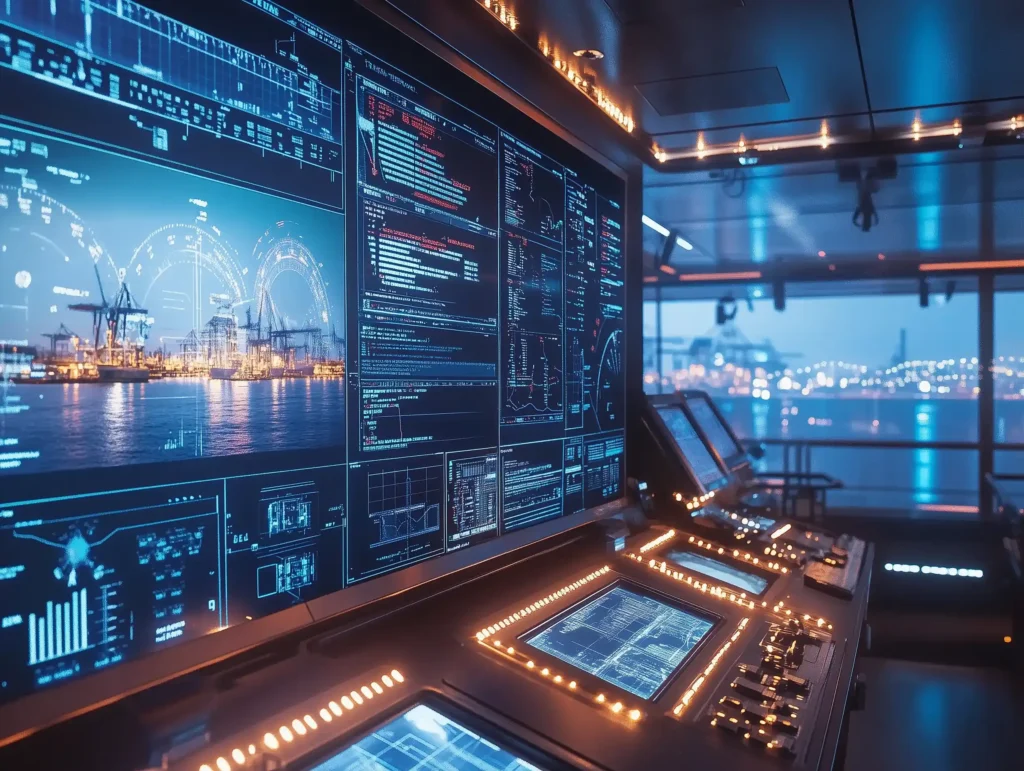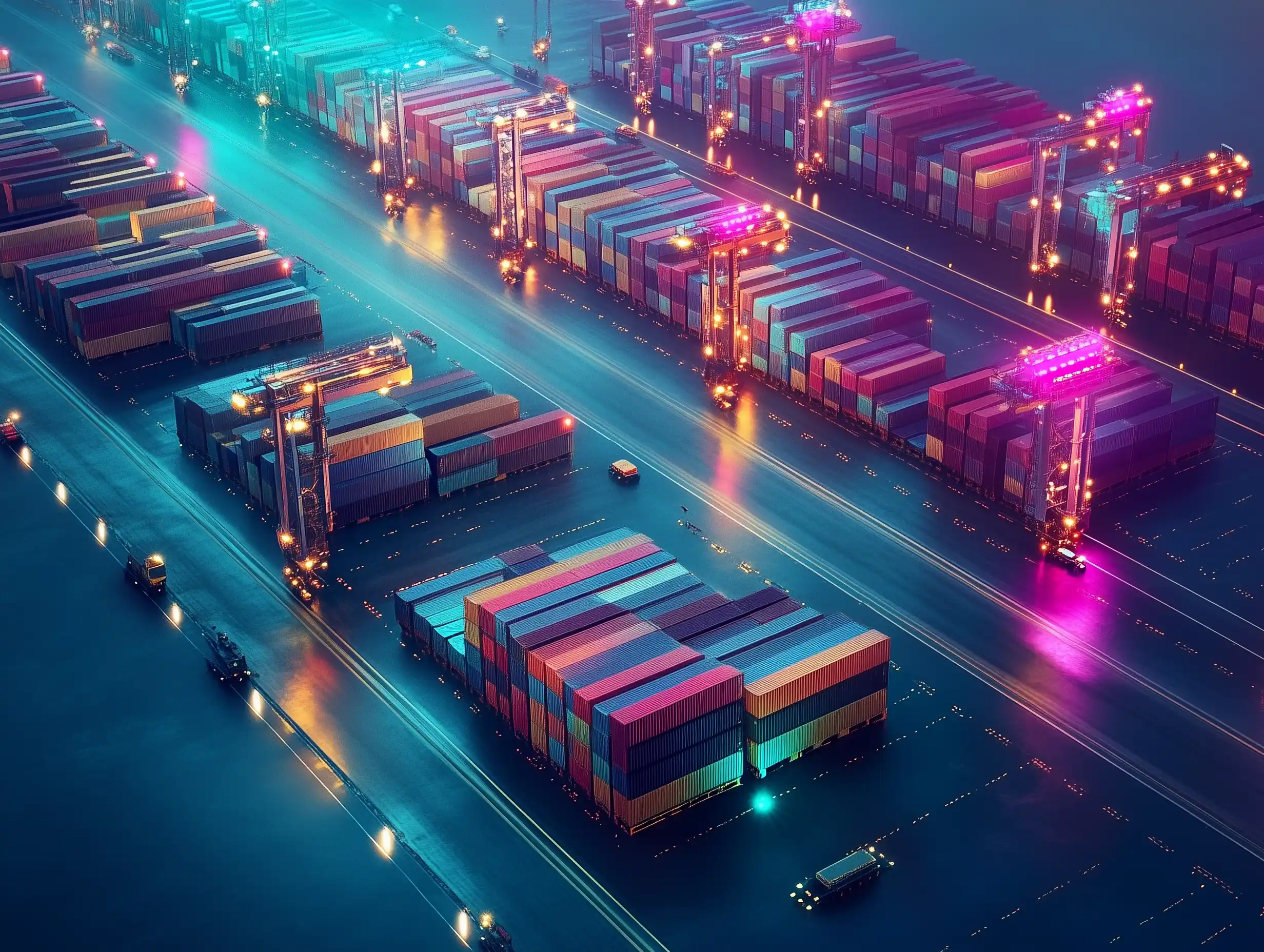- Smart ports integrate IoT, AI, and blockchain to enhance efficiency and reduce costs
- Maritime 4.0 technologies offer 20% potential reduction in operational downtime
- Integration challenges include cybersecurity risks and workforce readiness
- Digital twins and automation are transforming traditional port operations

What Makes a Port “Smart”?
A smart port is not simply a port with digital tools. It represents a fundamental transformation in how maritime operations function. Smart ports harness digital technologies to create interconnected systems that optimize efficiency, safety, and sustainability across the shipping industry.
The concept emerges from the broader Maritime 4.0 revolution, which builds upon earlier industry phases. While Maritime 1.0 relied on basic navigation tools like sextants, and Maritime 2.0 introduced steam power, today’s Maritime 4.0 creates fully connected ecosystems where data flows seamlessly between ships, ports, and global supply chains.
At the heart of this transformation are real-time monitoring systems, predictive analytics, and automation that work together to create ports that are more responsive, efficient, and environmentally friendly than their traditional counterparts.

Key Technologies Driving Smart Port Evolution
Internet of Things: The Foundation of Connectivity
The Internet of Things forms the backbone of smart port operations. Networks of sensors monitor everything from ship movements to cargo conditions. These sensors can track:
- Vessel positions in real-time
- Equipment operational status
- Container locations and conditions
- Environmental factors like weather and water quality
This constant flow of data allows port operators to make informed decisions about resource allocation, maintenance needs, and traffic management. For example, sensors can measure ship loading every 15 seconds, ensuring optimal scheduling and resource utilization.
Artificial Intelligence: The Brain of Smart Operations
Artificial intelligence transforms raw data into actionable insights. In smart ports, AI algorithms analyze patterns to:
- Optimize vessel traffic and berthing schedules
- Predict equipment failures before they occur
- Enhance route planning to reduce fuel consumption
- Identify potential security threats
The power of AI lies in its ability to process vast amounts of information far beyond human capacity. This enables ports to move from reactive to proactive operations, addressing issues before they cause disruptions.
Digital Twins: Virtual Replicas for Real-World Solutions
Digital twin technology creates virtual models of physical port assets. These digital replicas are continuously updated with real-time data from IoT sensors, enabling:
- Simulation of different operational scenarios
- Testing of process improvements without disrupting actual operations
- Predictive maintenance that can reduce downtime by up to 20%
- Enhanced visibility into complex port systems
For instance, Bureau Veritas is developing class notations to ensure the accuracy of these digital twins, establishing standards for this emerging technology.
Benefits of Smart Port Implementation
Enhanced Operational Efficiency
The primary benefit of smart ports is significantly improved efficiency. Automated systems handle routine tasks with greater speed and accuracy than manual operations. This leads to:
- Reduced vessel turnaround times
- More efficient use of port space and equipment
- Lower operational costs through optimized resource allocation
- Increased throughput capacity without physical expansion
When a ship approaches a smart port, systems already know its cargo requirements, allowing for faster processing. This benefits shipping companies through reduced port fees and quicker delivery times.
Supply Chain Visibility and Resilience
Smart ports function as critical nodes in global supply chains, offering unprecedented visibility through:
- Real-time tracking of cargo from origin to destination
- Blockchain-secured documentation that reduces paperwork and fraud
- Automated customs processing that speeds clearance
- Early warning systems for potential disruptions
This transparency enables more accurate forecasting and planning, reducing uncertainties that can cascade through supply chains.

Environmental Sustainability
Smart ports contribute significantly to environmental goals through:
- Optimized vessel routing that reduces fuel consumption and emissions
- Energy management systems that lower port energy usage
- Environmental monitoring that ensures compliance with regulations
- Reduced congestion that minimizes idle time and associated pollution
For example, Barcelona’s smart port initiatives aim to reduce emissions substantially through AI and 5G technologies, demonstrating how digital solutions address environmental challenges.
Challenges in Smart Port Development
Cybersecurity Vulnerabilities
As ports become more connected, they face increasing cybersecurity threats. The convergence of information technology (IT) and operational technology (OT) creates new attack surfaces that malicious actors can exploit.
Port operators must implement robust security measures to protect against threats that could disrupt operations or compromise sensitive data. The International Maritime Organization has established rules requiring shipping companies to address cyber risks, but implementation remains uneven across the industry.
Workforce Transition
The shift to smart ports requires new skills and roles. Traditional port workers need training to work alongside automated systems. This transition creates both challenges and opportunities:
- Need for digital literacy among existing workforce
- Creation of new roles focused on data analysis and system management
- Potential displacement of jobs that become automated
- Opportunities for higher-skilled positions
Successful workforce preparation requires collaboration between port authorities, educational institutions, and technology providers to develop training programs that equip workers for the digital maritime future.
Integration Costs and Complexity
Implementing smart port technologies requires significant investment. Ports must carefully balance:
- Initial infrastructure costs against long-term efficiency gains
- Integration of new systems with legacy infrastructure
- Standardization to ensure interoperability between systems
- Phased implementation to manage budget constraints
These investments often pay off through improved efficiency and new revenue streams, but the initial outlay can be substantial, particularly for smaller ports.
The Future of Smart Ports
Autonomous Shipping Integration
The next frontier for smart ports is seamless integration with autonomous vessels. This includes:
- Automated berthing systems that guide vessels without human intervention
- Coordinated communication between autonomous ships and port systems
- Advanced traffic management for mixed autonomous and conventional shipping
Companies are already developing self-sailing ships using IoT and AI technologies, with smart ports playing a critical role in supporting this evolution.
Enhanced Data Analytics
The future of smart ports will be increasingly data-driven, with advanced analytics enabling:
- More accurate predictions of operational needs
- Optimized resource allocation across complex port ecosystems
- Customized services based on shipping company preferences
- Real-time adaptation to changing conditions
Big data analytics will transform maritime operations by providing insights that drive decision-making at all levels, from strategic planning to day-to-day operations.
Navigating the Digital Maritime Future
Smart ports represent the future of maritime logistics. By embracing digital technologies, ports can enhance efficiency, improve sustainability, and strengthen their position in global supply chains.
The transition requires careful planning, substantial investment, and workforce development. However, ports that successfully navigate these challenges will be well-positioned for long-term success in an increasingly competitive global shipping environment.
For maritime professionals, understanding these technologies and their implications is essential. The evolution toward smart ports is not merely a technological shift but a fundamental transformation of the maritime industry that will reshape global trade for decades to come.


Leave a Reply